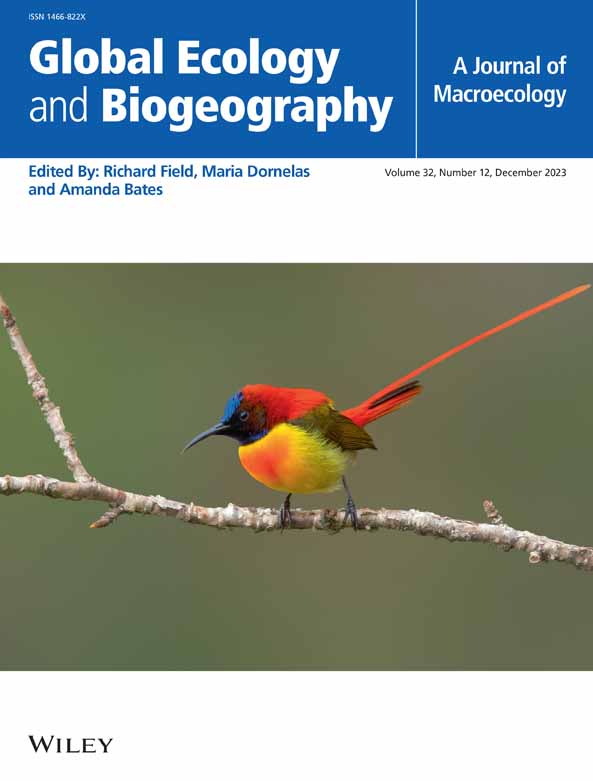Shining a Light on Daytime Coral Spawning Synchrony Across Oceans
Abstract
Aim
The variety of coral taxa and environmental cues triggering broadcast spawning gave rise to contrasting theories about coral reproduction synchrony. Here, we shine a new light on this synchrony across oceans by highlighting how environmental cues modulate spawning time at various spatial scales in an understudied yet abundant gonochoric species.
Location
South Indian and Pacific Oceans.
Time Period
2014–2023.
Major Taxa Studied
Porites rus .
Methods
Porites rus daytime spawning was investigated using a non-invasive citizen science approach (> 300 voluntary observers) at colony, reef, island and ocean scales. Spawning time was recorded between 2014 and 2023 at a total of 104 reef locations from 15 islands in three countries and multiple depths across the Indian and Pacific Oceans. Statistical models were employed to assess the relationships between spawning time and depth, light and sea surface temperature at different spatial scales, and in both male and female colonies.
Results
Spawning occurred synchronously for colonies located a few meters to > 15,000 km apart, monthly 5 days after full moon over an extended, uninterrupted period from October to April. Strong linear relationships between depth, light, water temperature and spawning time after sunrise held at the different spatial scales for both males and females, which spawned ca. 20 min apart. Interestingly, single colonies spawned across consecutive days and months.
Main Conclusions
The largest data set for a daytime coral species compiled here allows extremely accurate predictions of P. rus spawning months, days and time (minute-level precision) at different locations and depths in the Southern Hemisphere, facilitating field observations and experiments. Previously underexplored, the highly effective reproductive strategy of P. rus may explain its broad distribution and persistence in stressed environments, positioning it as an invaluable model organism for studying the physiological and genetic processes driving behavioural synchrony and biological rhythms across interconnected biogeographical regions.

 求助内容:
求助内容: 应助结果提醒方式:
应助结果提醒方式:


